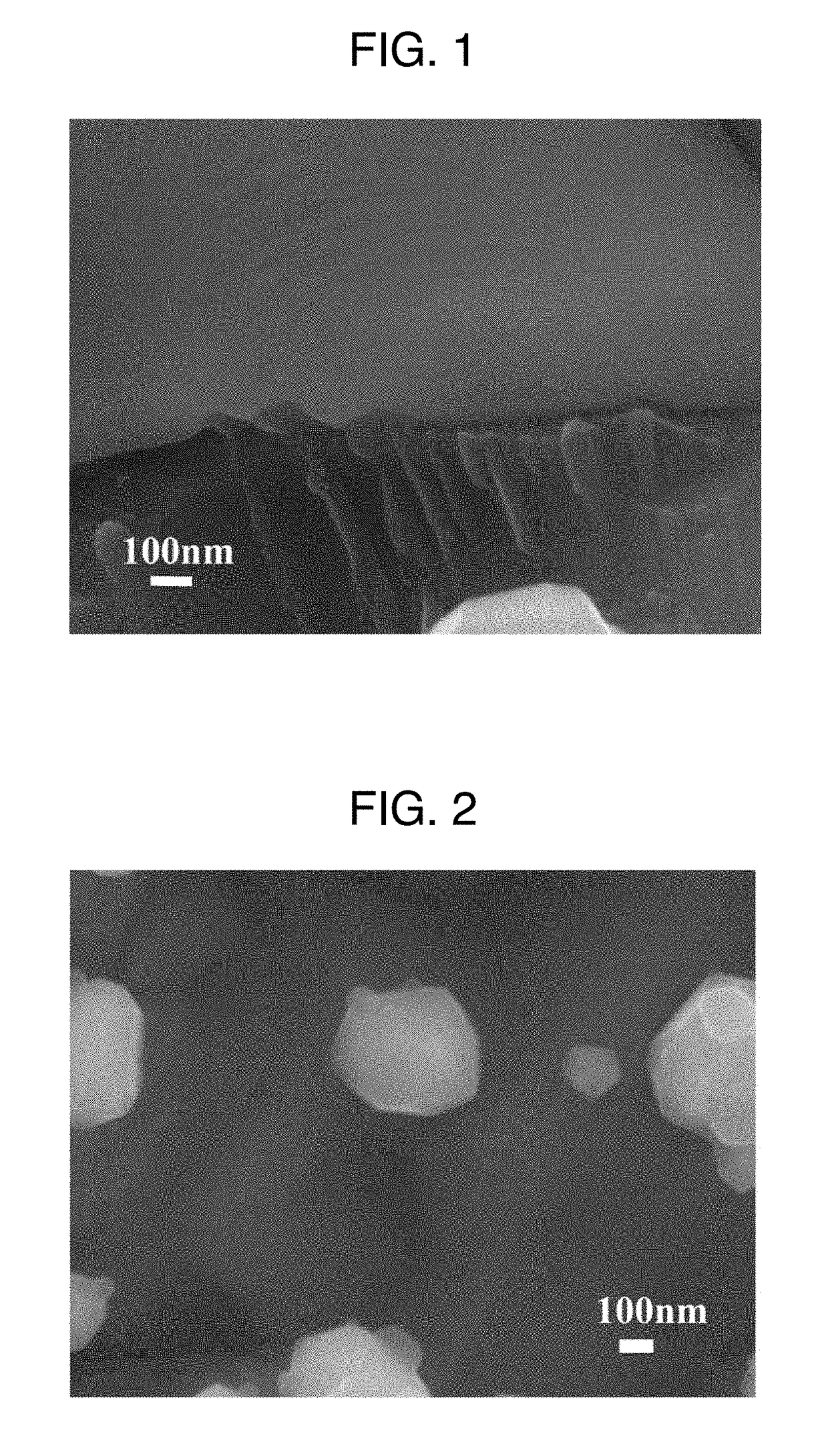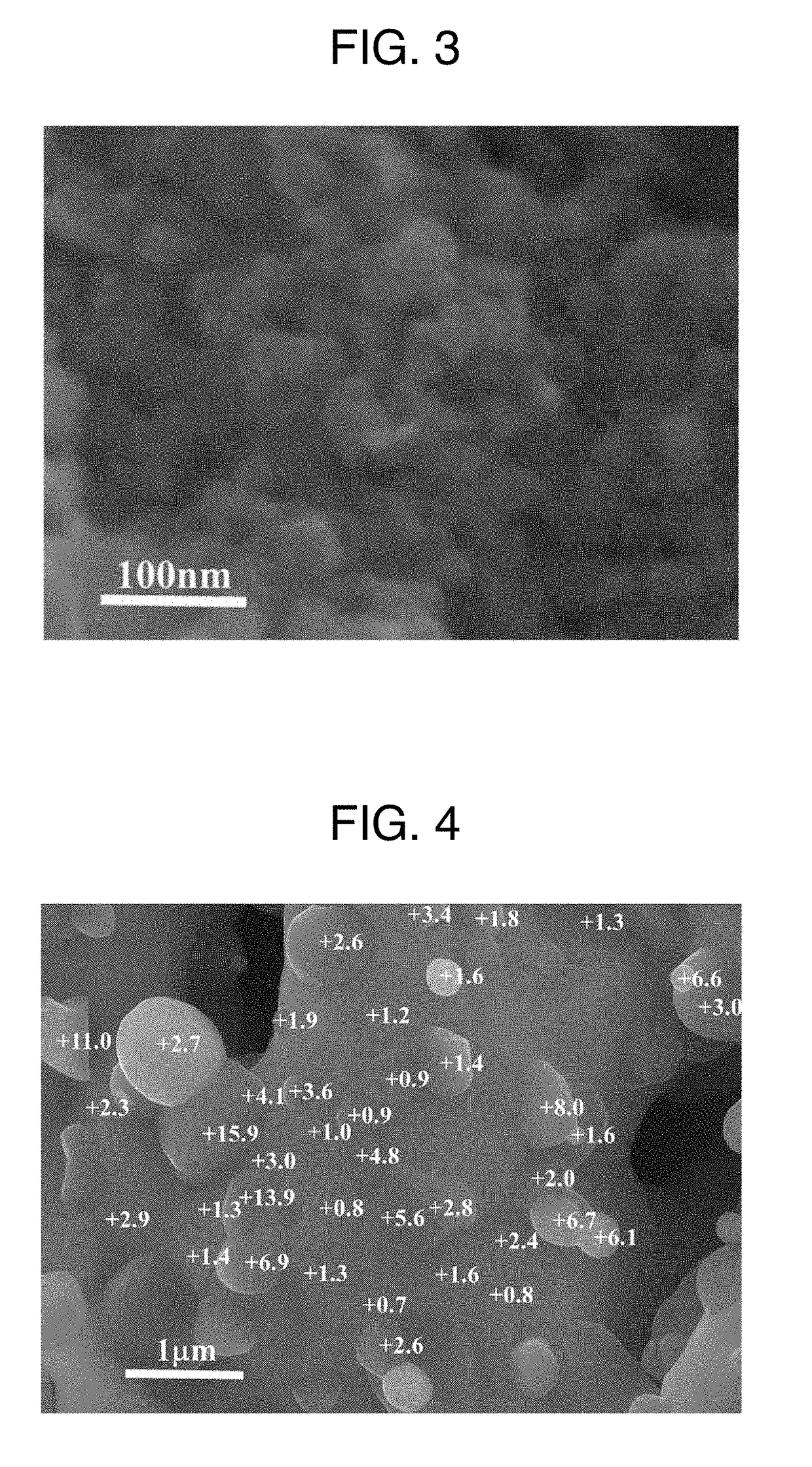Magnetic Material and Manufacturing Method Therefor
a magnetic material and manufacturing method technology, applied in the field of soft magnetic materials, can solve the problems of deterioration of magnetic properties, increased cost of punching and lamination steps, and increased cost of punching and lamination steps, and achieves high saturation magnetization, small eddy current loss, and high oxidation resistance.
- Summary
- Abstract
- Description
- Claims
- Application Information
AI Technical Summary
Benefits of technology
Problems solved by technology
Method used
Image
Examples
example 2
[0259]The Ti-ferrite nanopowder of Comparative Example 1 having a (Fe0.951Ti0.049)43O57 composition and an average powder particle diameter of 20 nm was placed in a crucible made of aluminum titanate, the temperature was increased at 10° C. / min up to 300° C. in a hydrogen flow, then increased from 300° C. to 600° C. at 2° C. / min, and a reduction treatment was carried out at 600° C. for 1 hour. After that, the temperature was lowered at a rate of 45° C. / min to 400° C., and then cooled from 400° C. to room temperature over 40 minutes. Next, a gradual oxidation treatment was carried out at 20° C. in an argon atmosphere having an oxygen partial pressure of 1% by volume for 1 hour to obtain a magnetic material having a composition ratio of titanium to iron of Fe94.4Ti5.6. At this time, based on the whole magnetic material including Ti, Fe, O, and K, the O content was 6.0 atom % and the K content was 0.2 atom %. Further, the average powder particle diameter of the Fe—Ti magnetic material ...
examples 3 to 11
[0273]Magnetic materials of the present invention were produced in the same manner as in Example 1, except that the reduction temperature was set to that shown in Table 1 within the range of 450° C. to 1200° C., and a rate v of temperature decrease (° C. / min) until 400° C. was set to, when the reduction temperature is taken to be T (° C.), a velocity represented by the following relational expression.
[Expression 2]
v=0.1T−15 (2)
[0274]The measurements were also carried out in the same manner as in Example 1. In all of the examples, it was confirmed that an α-(Fe,Ti) phase (first phase) and a phase (second phase) having a larger Ti content than that phase were formed in the observed magnetic material. It was also confirmed that, in Example 3, a first phase of α-(Fe,Ti) phase and a second phase (specifically, a titanomagnetite phase and a wustite phase) having a Ti content of less than 2 atom % but two times or more and 105 times or less than that of the first phase were formed in the ...
example 12
[0281]An Fe—Ti metal powder was prepared in the same manner as in Example 5, except that the reduction conditions were changed to 550° C. for 4 hours. The measurements were also carried out in the same manner as in Example 1. With a reduction time of 4 hours, the reduction reaction advanced and the titanohematite phase and the titanomagnetite phase, which did not disappear on XRD for a reduction time of 1 hour at 550° C., disappeared. From the results of the SEM observation, it was also found that the magnetic material of this example was a mixed phase of an α-(Fe,Ti) phase and a spawn phase. Further, in this example, it was also confirmed that the observed magnetic material contained an α-(Fe,Ti) phase (first phase) and a phase (second phase) having a larger Ti content than that phase.
[0282]The measurement results of the phases, composition, particle diameter, and magnetic properties of this example are summarized in Table 1.
PUM
| Property | Measurement | Unit |
|---|---|---|
| Grain size | aaaaa | aaaaa |
| Grain size | aaaaa | aaaaa |
| Temperature | aaaaa | aaaaa |
Abstract
Description
Claims
Application Information
 Login to View More
Login to View More - R&D
- Intellectual Property
- Life Sciences
- Materials
- Tech Scout
- Unparalleled Data Quality
- Higher Quality Content
- 60% Fewer Hallucinations
Browse by: Latest US Patents, China's latest patents, Technical Efficacy Thesaurus, Application Domain, Technology Topic, Popular Technical Reports.
© 2025 PatSnap. All rights reserved.Legal|Privacy policy|Modern Slavery Act Transparency Statement|Sitemap|About US| Contact US: help@patsnap.com



